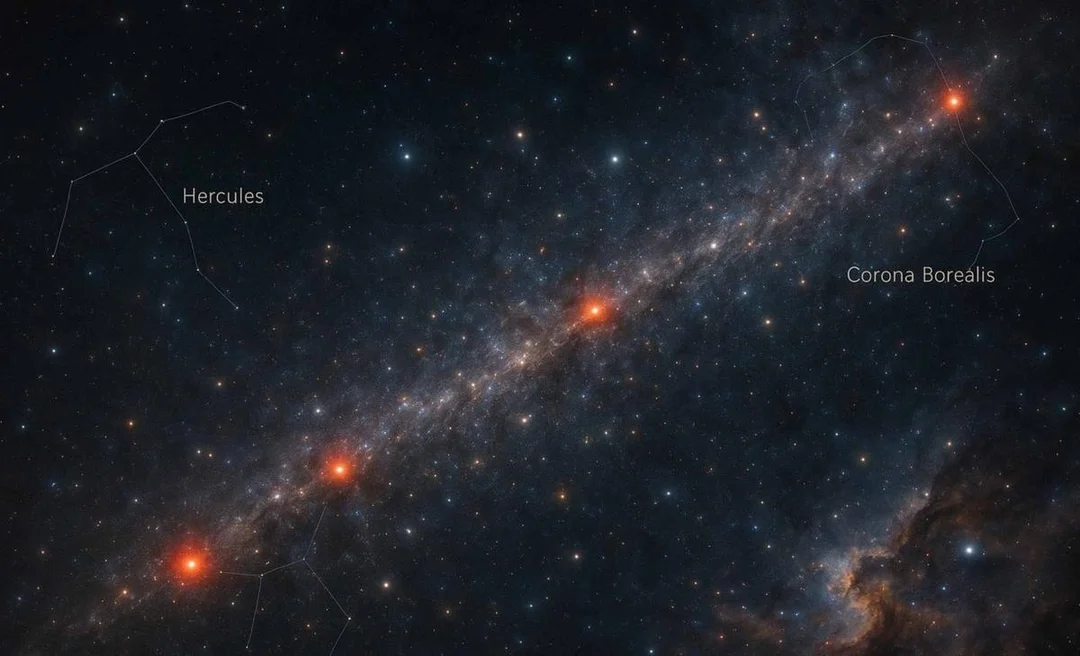
Scientists Discover Quipu: The Largest Confirmed Structure in the Universe
In a monumental discovery shaking the foundations of cosmology, scientists have confirmed the existence of Quipu, a gargantuan cosmic structure stretching 1.3 billion light-years across. This cosmic behemoth, named after the Incan counting system, is the largest coherent structure ever identified, comprising approximately 200 quadrillion solar masses. The implications of this discovery are far-reaching, impacting our understanding of galaxy evolution, dark matter, and even fundamental cosmological principles.
The Cosmic Tapestry: Decoding Quipu's Structure
Quipu consists of 68 massive galaxy clusters interconnected by vast filaments, forming a cosmic web that mirrors its namesake Incan device. This is a game changer because scientists have verified it as a single, cohesive entity – a feat previously elusive for other hypothetical structures.
"This is technically the largest structure in the nearby universe that we can confirm with absolute certainty," stated Dr. Hans Böhringer of the Max Planck Institute, the lead researcher. He further clarified that while larger structures may exist, Quipu stands as their most significant confirmed finding.
Mapping the Unimaginable: The Science Behind the Discovery
The identification of Quipu demanded cutting-edge technology. Researchers leveraged data from the ROSAT X-ray satellite, pinpointing galaxy clusters via their X-ray emissions and mapping clusters approximately 425-800 million light-years from Earth. The process involved:
- Analyzing X-ray survey data
- Mapping redshift intervals for 3D positioning
- Confirming physical connections between clusters
- Creating comprehensive mass distribution models
Quipu vs. The Great Wall: A Matter of Confirmation
While Quipu claims the title of largest *confirmed* structure, structures like the theoretical Hercules–Corona Borealis Great Wall – potentially spanning 10 billion light-years – exist. However, according to astrophysicist Dr. Elena Martinez, the definitive difference lies in the *physical mappability* of Quipu, differentiating it from these speculative structures.
The Dark Matter Enigma
Like other colossal cosmic structures, Quipu is largely composed of dark matter, the mysterious substance constituting around 85% of the universe's matter. This discovery opens doors to study the role of dark matter in shaping the universe on a grand scale.
Challenging Cosmological Principles
The existence of Quipu forces scientists to re-evaluate fundamental cosmological principles concerning universal homogeneity on large scales. It presents new insights into galaxy formation and evolution, and a better understanding of dark matter distribution. It also poses potential connections to anomalies in cosmic expansion.
What Lies Beyond?
As technology advances, similar to advancements in Meta’s AI glasses or Samsung’s cooling systems, astronomers anticipate discovering even more gigantic structures. The very frontier of science continues to relentlessly push boundaries. How far will scientific reality stretch?
Quipu serves as a powerful reminder of how little we know about the vast universe. What other cosmic wonders await our discovery? How will these discoveries reshape our understanding of the cosmos? The possibilities are as limitless as space itself. Share your thoughts and leave a comment below.